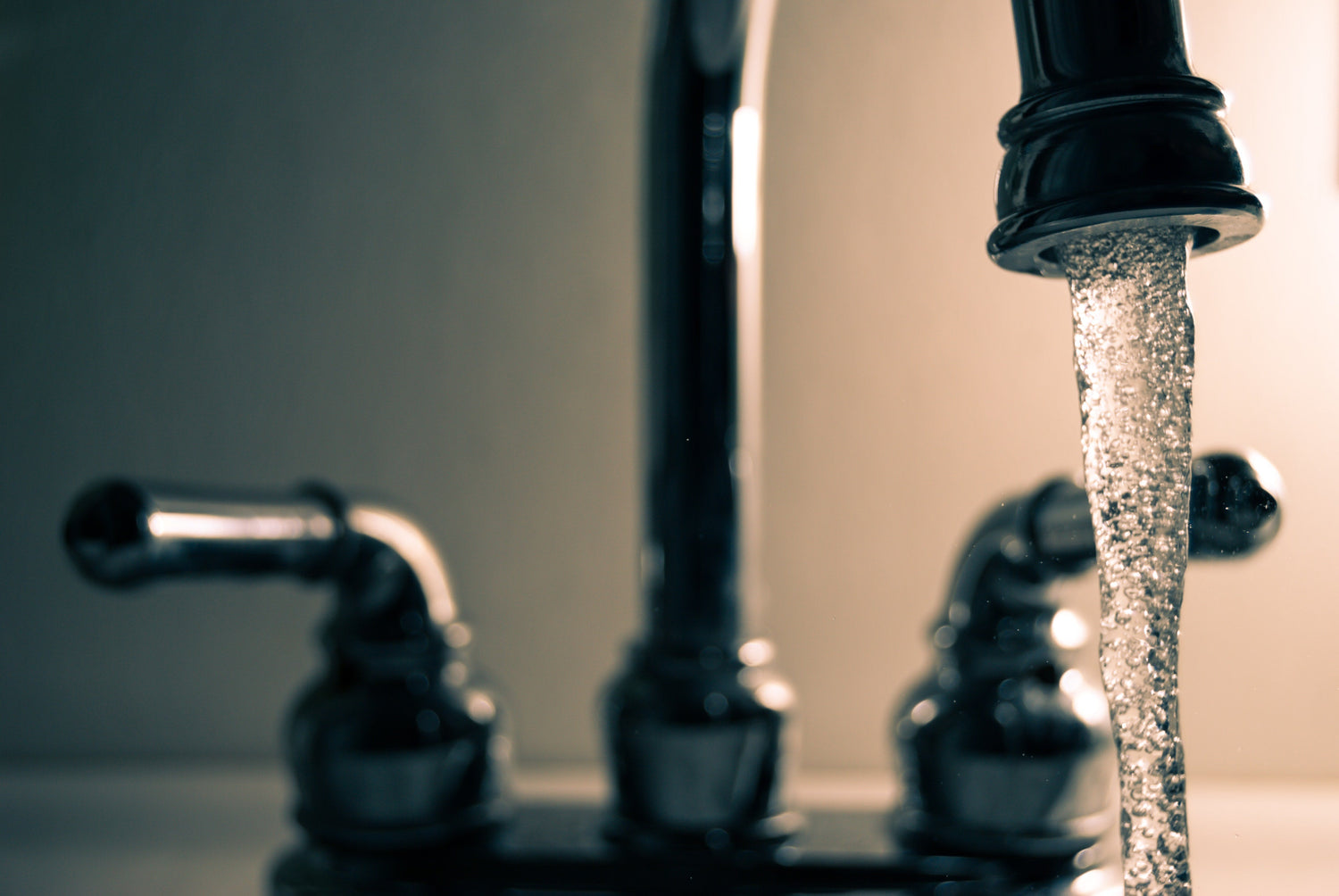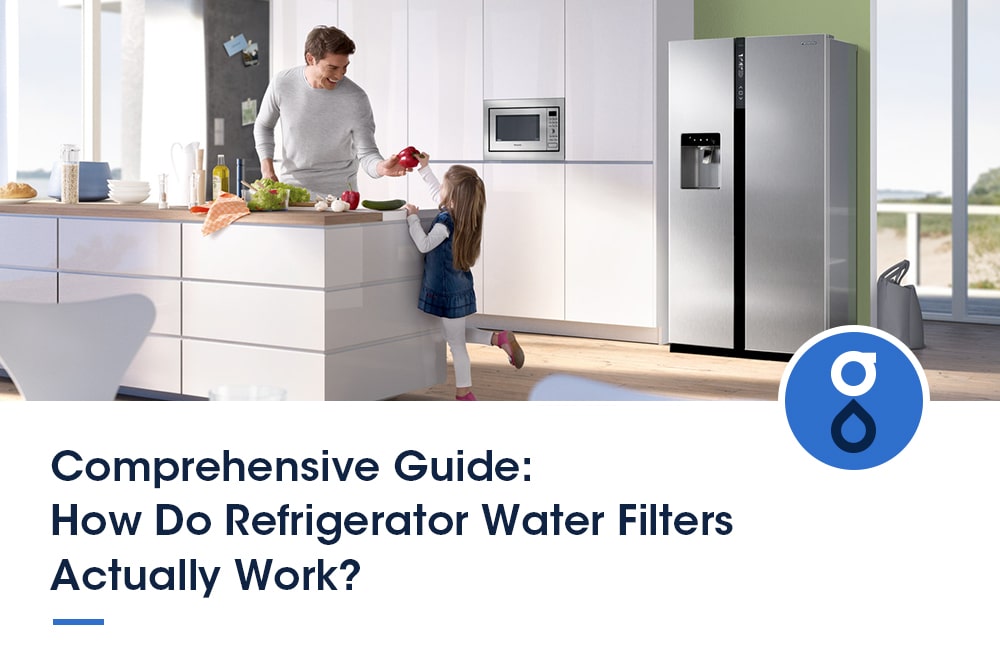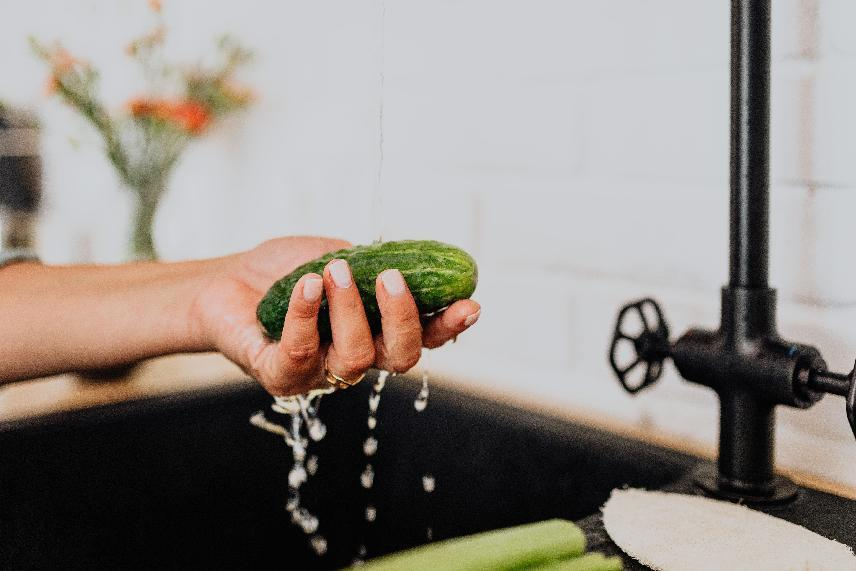Table of Contents:
For decades, public water suppliers have added chlorine to the water to treat it before it reaches homes. When you consider the widespread use of chlorine as a disinfecting agent, it may seem counterintuitive to want to remove this common disinfectant from your water.
But do you know its potential adverse health effects, such as cancer? While chlorine and chloramine (a combination of ammonia and chlorine) help kill pathogens in tap water, they can be serious contaminants themselves.
The good news is you can remove chlorine and chloramine for cleaner, healthier water.
Read on to learn more about how chlorine can affect your health and cooking and what you can do about it.
Why Do Public Water Systems Commonly Use Chlorine as a Disinfectant?
Chlorine is the most commonly used water disinfectant because of its low cost, wide-scale availability, and ease of use. It effectively kills various bacteria and disease-causing microorganisms, helping eliminate the risk for many waterborne diseases, such as typhoid fever, cholera, dysentery, and salmonella.
Water suppliers easily maintain a residual level of chlorine in the water to protect it from bacteria growth while on the way to your home from the treatment plant.
Health effects of chlorine
While chlorine has been added to water to disinfect it for more than a century, there have been concerns about its potential health effects in recent years. The chlorine concentration in drinking water is typically low, so you’re unlikely to get any immediate side effects. However, the cumulative effects of drinking chlorine-treated water for years can have severe consequences on your health. Studies have linked long-term exposure to serious health complications.
Cancers
Research has linked chlorine to cancer. According to study findings compiled in a U.S. Council of Environmental Quality report, chlorinated water drinkers are 13-93% more likely to get rectal cancer and 53% more likely to get bladder and colon cancer than those who drink water without chlorine.
A 2016 study found a correlation between chlorinated drinking water and colorectal cancer. The colorectal cancer threat primarily comes from the disinfectant byproducts in chlorinated water. So what are these disinfectant byproducts?
Water has organic compounds. When chlorine is added to the water, it naturally reacts with the compounds creating chemicals known as disinfection byproducts (DBPs). Harmful disinfection byproducts include:
- Trihalomethanes (THMs)
- Dichloroacetic acid
- Trichloracetic acid
- Some haloacetonitriles and chlorophenols
Trihalomethanes (THMs) are the most toxic DBPs that chlorine creates.
Pregnancy Complications
Exposure to THMs can harm pregnant women. One study found that elevated THM levels in maternal blood could lead to:
- Low birth weight
- Short birth length
- Increased risk of babies being born small for gestational age
According to a study by the Public Interest Research Groups and the Environmental Working Group, pregnant women who drink chlorine-treated water face higher risks of miscarriage and having babies with congenital disabilities.
Nervous system damage
DBPs have been linked to problems with the central nervous system as well as the kidneys, liver, heart, and respiratory system.
Chloramine effects
Chloramine exists in different forms: monochloramine (the safest form), dichloramine, and trichloramine. While water treatment plants use monochloramine, experts state that monochloramine can accidentally convert into the more dangerous forms, depending on factors like pH value, turbulence, temperature, and the ratio of chlorine to ammonia.
Chloramine negatively affects aquarium fish, small house pets, and kidney dialysis patients.
Effect of Chlorine on Your Food and Drinks
Even if your water has low chlorine levels, it may still have a strange taste and smell. Chlorine tends to make tap water taste like chemicals or leave a nasty aftertaste. You may even smell the chlorine in your water. Removing chlorine from your drinking water improves its smell and taste.
Beverages
Chlorine also alters the taste of beverages. Remember, beverages like coffee are more than 90% water. Removing chlorine through carbon filtration improves the taste of your coffee, smoothies, and other beverages.
Food
If you have a garden, you may spot a bleaching effect when using chlorinated water on your vegetables. The vegetables may not be as green as expected.
Chlorine makes a difference in baking too. The dough you use is usually more than 50 percent water before baking. Filtering your water when making dough takes out the strong chlorine taste and other particles, enhancing the quality of your baked goods. Filtering chlorine from your water also makes a difference in the taste and smell of the other foods you prepare.
How to Protect Yourself from the Harmful Effects of Chlorine
The growing concerns over chlorine’s hazardous effects have prompted more people to seek ways to eliminate free chlorine residuals from their drinking water. Here are the measures you can take to protect your family from chlorine’s potentially toxic effects.
Filtration
A top way of eliminating chlorine from the water is by using water filters. Filters that utilize coconut shell-activated carbon rather than regular filter membrane are excellent at removing chlorine. Coconut shell activated carbon is environmentally friendly, has high adsorbent properties, and provides a large surface area for chlorine and other contaminants to stick to as water passes through the filter. NSF-42 certification also proves that a filter can remove chlorine from your water.
Leave It Standing
Chlorine wears off when you leave chlorine-treated water standing for several days. Unless you have much time and space to leave jugs of water sitting out for long periods, this is highly unlikely to be a practical solution for you.
Boiling
Chlorine disperses from water faster in a warm environment. For that reason, boiling can help you relieve your water of chlorine. You’ll need to boil the water for 15 to 20 minutes to effectively remove a significant amount of chlorine and chloramine from your tap water.
Chemical neutralization
Chemical neutralization involves adding potassium metabisulfite tablets to chlorinated water. When added, these tablets dissolve in the water, neutralize the chlorine, and then evaporate. One tablet can neutralize 20 gallons of chlorinated water. There will be a stifling smell as you chemically neutralize the water. The tablets are limited in availability.
Final Word
Chlorine has been a popular disinfectant for years. While it helps kill most disease-causing pathogens in water, you also can’t ignore the health complications that research has linked to it. Limiting your chlorine intake will help you ward off its possible harmful effects.
Filtration is the most recommended method for removing chlorine from your water. Remember, not all water filters can remove chlorine. Don’t forget to check whether the filter you want to invest in carries NSF-42 certification. Coconut shell-based carbon filtration media will do a great job at removing chlorine.
A good starting point for your search for high-quality filters is Glacier Fresh. Our water filters are NSF-42 certified and have coconut shell-activated media that removes 97.9% of chlorine, chloramine, and more than 60 other contaminants in your water. Enjoy clean, fresh-tasting, and safe water on demand with Glacier Fresh water filters.
















